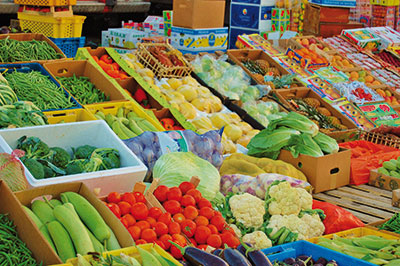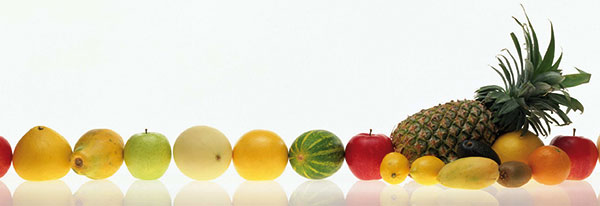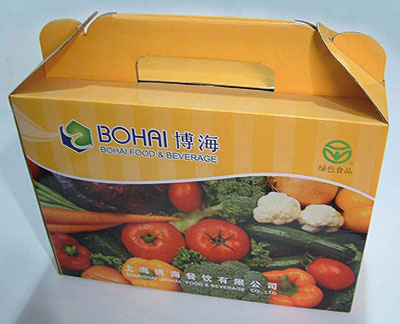Fresh produce: market and packaging
Figures in brief An overview on the situation of the sector in Italy: production, trade balance, consumer trends. Focus on the types of packaging used.
 In Italy 460 thousand vegetable producing-, 340 thousand fruit producing- and 150 thousand citrus fruit producing concerns operate over an area of over a million and a half acres; providing employment for some two million people.
In Italy 460 thousand vegetable producing-, 340 thousand fruit producing- and 150 thousand citrus fruit producing concerns operate over an area of over a million and a half acres; providing employment for some two million people.
Since 1990 Italy’s agricultural area has decreased at an average annual rate of around 10%, but at the same time yields per hectare have increased. The industry is obviously prone to significant production peaks and troughs depending on weather conditions.
The figures and trends for Italy
Italy is the largest producer of fruit and vegetables in Europe (accounting for a full 25% of the European total), while with 2% of world production, it ranks sixth after giants such as China (38% of total fresh produce production), India (11%), the USA (4%), Brazil and Turkey (both 3%).
In 2012 Italian fruit and vegetable production stood at 34,000 t/000, amounting to a total turnover of 23 billion euros.
In 2012 fruit and vegetables placed on the market for consumption in Italy, the subject of this analysis, totalled 12,691 t/000, 3,800 t/000 of which was exported and 2,800 t/000 resultingly imported. Apparent consumption is estimated at around 11,691 t/000.
Summing things up, 2012 showed an overall drop in both domestic consumption as well as foreign trade, consequently impacting on production: a negative result to be attributed to the economic crisis that has affected both Italy and the EU as a whole.
According to the assessments of the overall production of fresh produce drawn up based on the results for the first half of 2013 and the forecasts for the second half of the year, the situation shows a slight uptrend: Overall production should in fact grow by about 0.6-1%.
However, it is believed that this growth will be determined by the increase in product intended for freezing and processing (various fruit and vegetable preserves) while on the other the amount to be consumed "fresh" is estimated to drop by 5%. In particular 2013 could feature a 7-8% drop in exports, a 3-5% increase in imports and a domestic consumption, still referring to quantities, down by about 2%.
The weakness of Italian exports is endemic, and according to findings announced during the Macfrut conference, originates from an inadequate organization and management of the offer: Italian fruit and vegetable farms are in fact many, often small and often incapable of operating on foreign markets.
As for domestic demand, horeca consumption forecasts are fairly bleak and - it is believed - could mark a decline of 6-8%, while household consumption should show a slight increase of around 0.4 to 0.5%. Still according to Macfrut studies, in terms of source of purchase the share of the discount stores continues to increase, both in volume and in value, while the share of the super- and hypermarkets is seen to fall 5.3%.
The area of washed and processed produce (fresh, washed, cut, packaged, ready-to-eat fruit and vegetables) continues to increase, though at rates lower than in the recent past.
Consumer consensus for this type of product is likely to increase.
Another interesting trend, again involving fresh-cut produce, is the progressive growth in the demand for single dose packaging.

Packaging
The handling of fresh fruit and vegetables has three stages corresponding to different packaging solutions:
1) transport from the field to the sorting centers (consortia, warehouses etc.);
2) transportation from the sorting centers to distribution centers (local markets, department stores etc.);
3) sale to the consumer.
1) The transport from the field to the sorting centers is done using returnable packaging. The use of the plastic bin, with fixed or collapsible sides, is growing progressively: currently about 80% of produce is handled with this system (at the beginning of 2000 the figure stood at 65%).
Hence the wooden bin continues to be subject to the competition of its plastic equivalent, now having a share of less than 20% (that is likely to shrink even further in the future).
2) With regard to transportation from the sorting centers to distribution (domestic and export markets) the packaging solutions are more varied and trends towards change rather more dynamic.
For many years the wooden crate held pride of place in the fresh produce sector, with a significant presence of returnables that before being put back on the market, were repaired by a myriad of small craftspeople.
For health reasons this practice is gradually disappearing, leading to a gradual reduction in use of the same: in 2013 the share of wooden crates (all disposable) should be 18.5%, compared to 19% in 2012. It is all the same to be considered that this type of packaging should settle at an average share of around 16-17%.
Indeed corrugated cardboard and plastic crates have gradually gained position on the market. The former currently feature an overall share of 40.5%, with peaks of about 60% for exported produce, while for products handled in Italy the share stands at about 20%.
Since their first appearance on the market, disposable plastic crates have in particular eroded the space of wooden crates, subsequently eroding the space occupied by corrugated cardboard crates.
Their share, having reached 36%, assessed on the total merchandise handled both on the Italian domestic market as well as that sent abroad, is though today down to 16.5% as a direct result of the assertion of returnable plastic crates.
Available with both fixed and collapsible sides, the use of returnable plastic crates is seen to be growing progressively, much favoured as they are by modern distribution, to the point where they have already reached the current market share of 19.9% out of the total of products handled. We underline that this type is mainly used on the Italian domestic market, where it reaches a share of 40%.
Fruit and vegetables are also handled using mesh bags (for potatoes and onions) and mini bins used by the largescale retail trade, which essentially uses them to contain melons, potatoes, oranges, apples, lemons and so on.
 3) The types of packaging used for the packing of fruit and vegetables intended for the final consumer (with reference to products sold in Italy) have a very varied mix, also featuring great dynamism, which is mainly driven by two factors: the ever increasing influence of modern distribution and rapid socio-economic changes.
3) The types of packaging used for the packing of fruit and vegetables intended for the final consumer (with reference to products sold in Italy) have a very varied mix, also featuring great dynamism, which is mainly driven by two factors: the ever increasing influence of modern distribution and rapid socio-economic changes.
The gradual spread of modern distribution implies the passing from assisted service to self service purchasing, with a consequent increased need to offer pre-packed products or products taken from the shelf to be placed in plastic bags and weighed and priced.
The less time available for shopping drives consumers to prefer modern distribution, where they can stock up with a full purchase. Moreover, MD is evermore targeting the purchase of washed, and fresh-cut ready-to-use produce (that in truth can now even be found at the local market).
The fruit and vegetables for consumption packaging mix features a strong presence of plastic packaging.
Baskets and trays, in many cases in conjunction with a stretchable plastic film, have reached a share of 28%.
The use of the plastic bag, progressively increasing, accounts for a share of 31% and also affects many delicate products sold in local markets (in addition to being used in weighing fresh produce sold at largescale retail stores).
The paper bag has a limited share of 19.5%.
Among emerging alternative packaging one has the polylaminate plastic tray with lid (with product stored in protective atmosphere), which has achieved a share of 10.5%: the solution is applied to the ready processed range of products showing steady growth.
Other types of packaging for fresh produce are the cardboard basket, used in general for some organic products and the mesh or net bag (made of raffia) for potatoes, onions, garlic, lemons etc.).
For some years the market has also featured bags and trays produced using biopolymers and in the near future packaging products made from recycled plastic will also feature on the market.
This trend though should not affect the packaging of fresh-cut produce, where trays and bags made from flexible converter laminates are used.
Plinio Iascone
Istituto Italiano Imballaggio




















